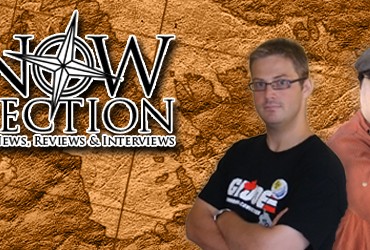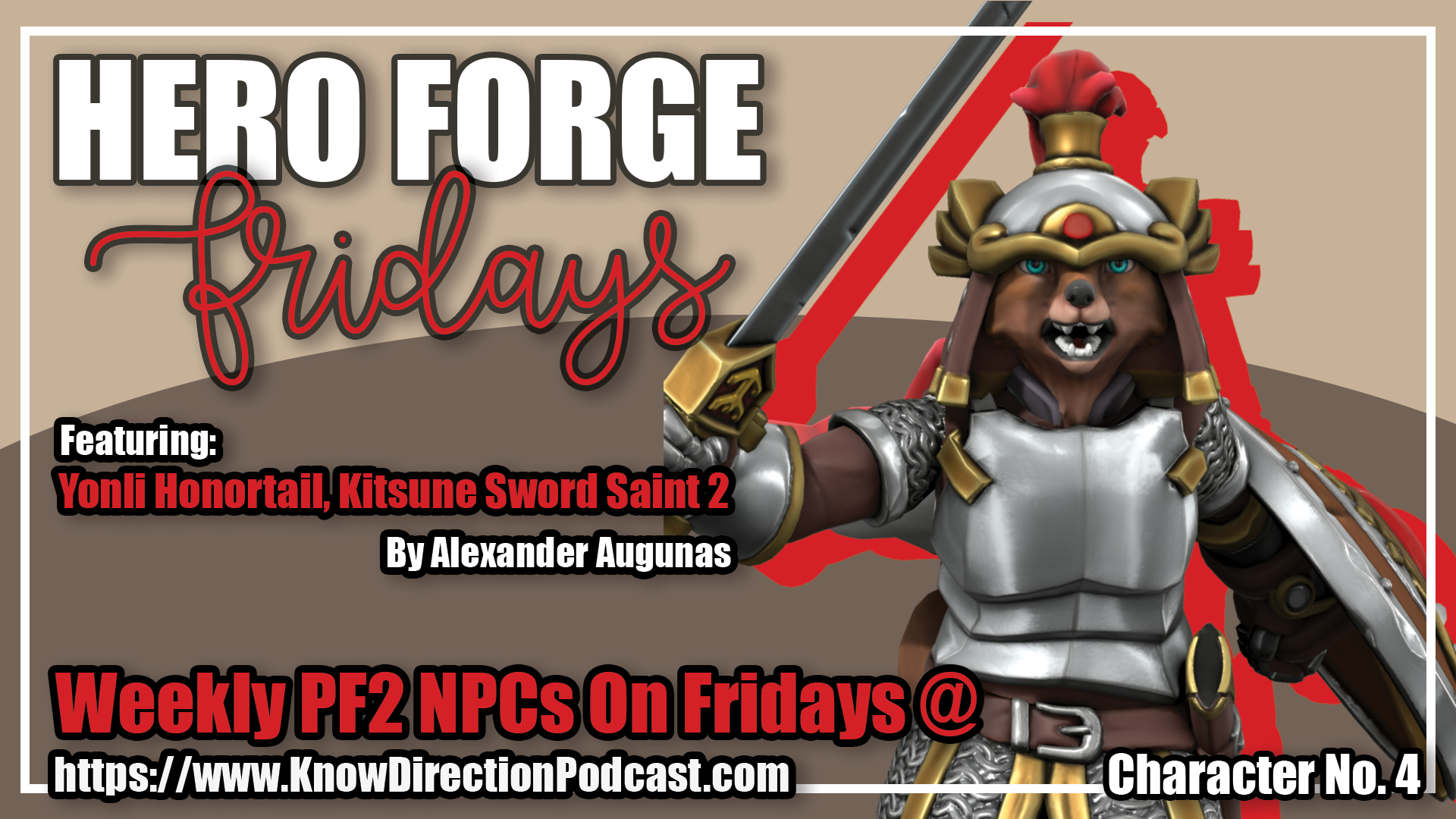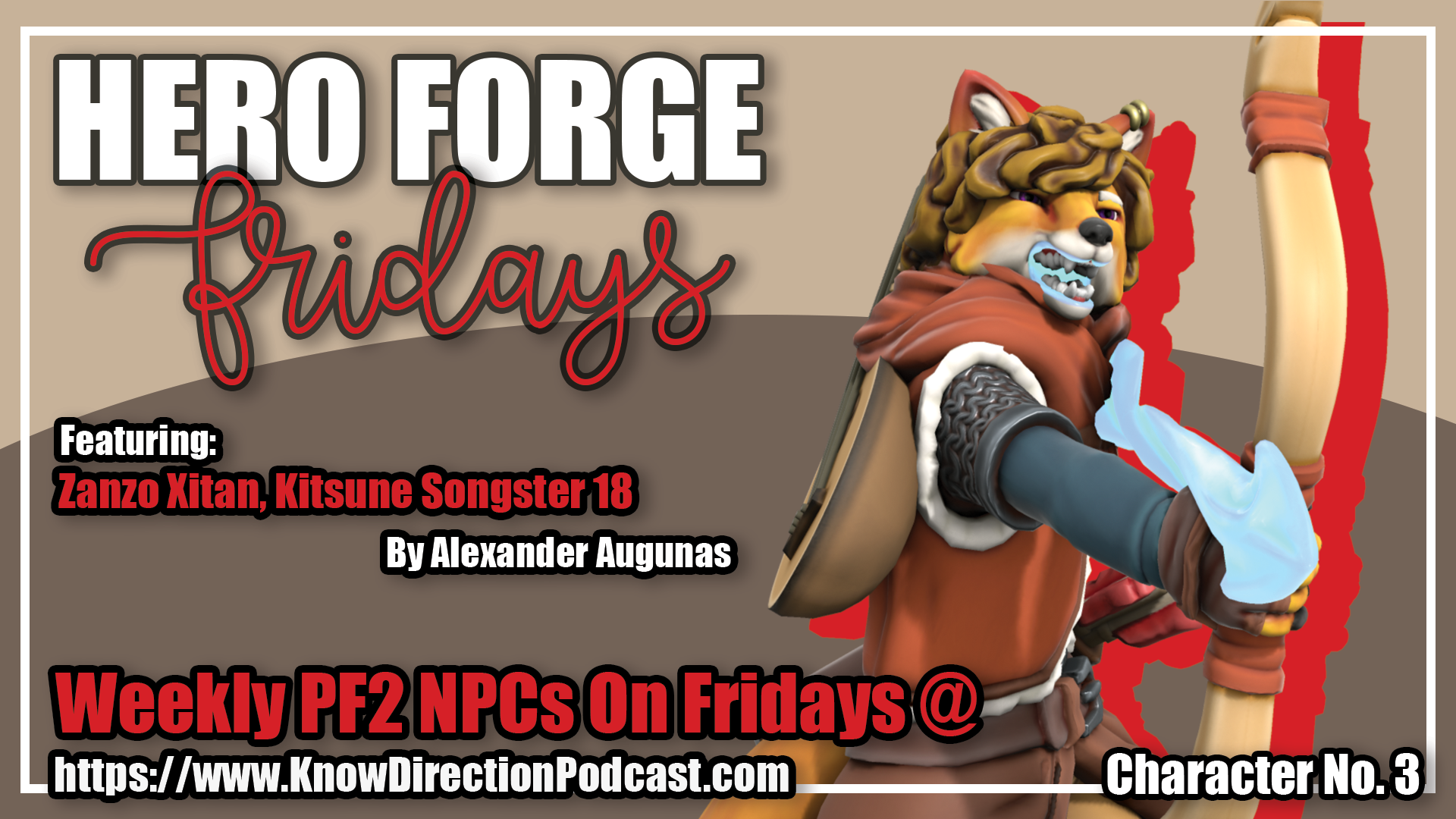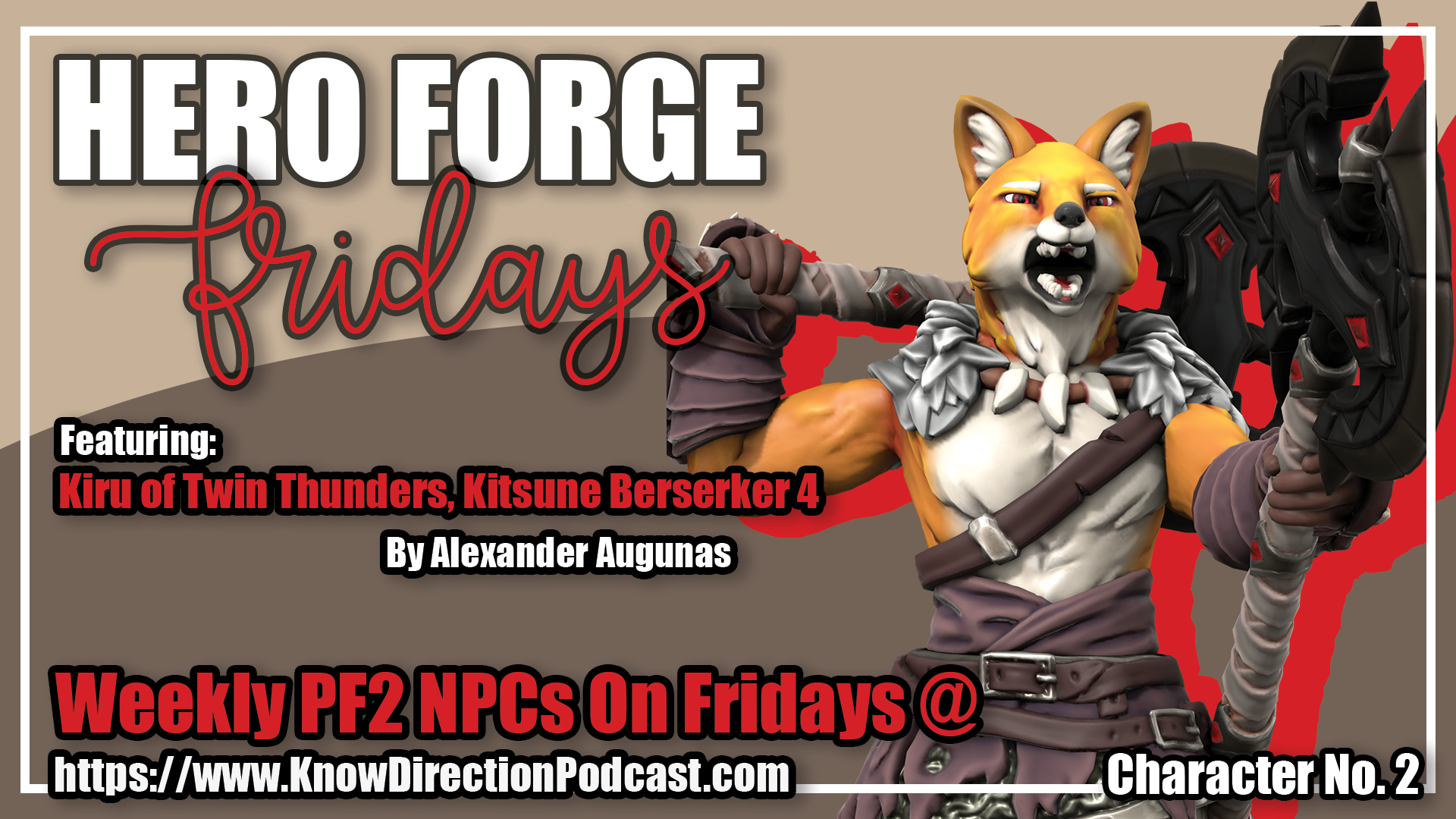Welcome to Guidance, Private Sanctuary’s source for tips and techniques for the Pathfinder Roleplaying Game, written by Everyman Gamer Alexander Augunas. Today, we’re going to be talking about prestige classes.
Two things happened that sparked my writing of this article.
First, as you might know, Anthony and I recently did a podcast on the magus despite the fact that Ryan and Cathy already talked about it. Oops. In order to make sure it didn’t happen again, I started combing through the older Private Sanctuary Podcast achieves to check and see what “we’ve” done already. I stumbled on this old 3.5 Podcast that Ryan recorded with his pre-Cathy co-host, Jay. In this podcast, they discuss prestige classes with a refreshing vigor. They talk about Prestige Classes that they’ve played, ones they’ve liked, ones they haven’t liked, and all about where you can find Prestige Classes in 3.5. (Hint: everywhere.)
Second, Pathfinder’s Designers announced they were revoking a specific, controversial ruling: the “spell-like abilities are spells for all prerequisites” ruling. Sides on whether this was a good thing or a bad thing are largely split down what you might as well call “bi-partisan” lines, with some people praising the Purple Golem for removing “an obvious error” in the errata and with others mourning the loss of a number of interesting character builds. Considering that I’ve used this errata several times in my builds, you can probably guess where I stand on this topic. Regardless, the biggest point to come out of this discussion focuses on prestige classes, their entry requirements, and whether or not they’re worth it.
I felt that this topic deserved an article. I’m thinking that I’m ultimately going to ring true to many of the points that I made in my multiclassing article, but when it comes to multiclassing, you can never show too much support for new material in that vein. So that’s exactly what I aim to do in today’s installment of Guidance!
What Is a Prestige Class?
Two aspects define a prestige class: first, they expand upon multiclassing and second, they aren’t available to 1st level characters. Prestige classes are specifically meant to be multiclasses into from core or base classes. In order to prevent 1st-level accessibility, all prestige classes possess a short list of prerequisites that must be met in order for a character to take levels in that class. These prerequisites are most often character building options, but in some cases (especially in 3rd Edition) prerequisites require more abstract things like being a member of a particular organization.
Although the term “prestige class” didn’t appear in Dungeons and Dragons until 3rd Edition, some 1st Edition classes had a similar concept to Prestige Classes, namely the bard or the thief-acrobat. (Yes. Thief-acrobat was the name of a class.) In this sense, the core idea of, “class that you can’t access until you’ve earned some experience” is a fundamental part of the mechanical history of the Pathfinder Roleplaying Game.
What Do Prestige Classes Do?
At their core, a prestige class is supposed to provide abilities for multiclass characters. In many cases, they advance certain class features while leaving others untouched. They often provide new abilities that follow a specific train of thought or thematic style. For instance, the Master of Chains prestige class allows you to play a character that specializes in the spiked chain. In Pathfinder, the Pathfinder Chronicler gives your character some nifty Knowledge-based options to choose from. Like archetypes or feats, prestige classes exist to give characters new ways to interact with the world.
Where Are Prestige Classes Now?
In tradition 3.5 gameplay, a Prestige Class’s role was to provide a means of specialization for characters. For instance, a single-class fighter was a generalist, but by taking specific options and taking the Supreme Archer prestige class, he could specialize in something; in this case, archery.
This had some problems in 3.5, especially as the edition rolled onward. Because prestige classes are designed for multiclassing, they tend to favor specific classes over others. Got a lot of feat prerequisites? You’re probably favoring the fighter because fighters have more feats than other classes (even more true in 3.5, where characters only received a feat every three levels). And since many classes sported a large number of “dead levels,” or advancement levels where no new class features were earned, it became something of a no-brainer to take one, perhaps multiple, prestige classes in 3.5. And as I mentioned, relative balance was NOT a designer concern in 3.5; new classes and options were regularly produced that completely invalidated existing ones. Many people claim that this has happened to the rogue in the wake of the Advanced Class Guide, but even the rogue maintains some special abilities that only he has access to. In 3.5, rogues didn’t even have rogue talents (they got the slippery mind and improved evasion rogue talents as part of their character progression, though). Imagine having a rogue without talents in the Core Rules, then several years later introducing the Pathfinder Rogue to the game. One clearly invalidates the other. This happened frequently in 3.5, and it was even more intrusive with Prestige classes, where the sentiment often was, “I’ll stick to my boring old base classes until 7th level when my character TRULY comes together and gains the powers that I want him to have when he gains this base class.”
In Pathfinder, Prestige Classes have regained a bit of their former focus; they’re options that grant specific options for multiclass characters. But moreover, Pathfinder (especially the Campaign Setting line) has given Prestige Classes a new role: prestige classes often represent membership in a specific group, order, or organization. Winter witches, shieldmarshals, riftwardens, and all of the prestige classes in Inner Sea Gods all support this stance that Paizo seems to have taken.
Are Prestige Classes Viable?
This is a tricky question, and its often an incredibly loaded one. Its almost a matter of perspective, specifically in how you define the word, “viable.”
If one is asking, “Am I able to play the game while being a member of a prestige class?” then the answer is obviously, “Yes.” No one is stopping you from taking a Prestige Class, just like no one is stopping you from dipping levels of Commoner if you REALLY want to.
But when most people say, “viable,” they’re not asking for possibility, nor are they asking for a build that is ridiculously overpowered and totally going to destroy all of the GM’s encounters. Usually, they’re asking something along the lines of, “Can I take this option and feel as though I’m contributing to the group,” and sadly that’s where things get a little bit hazy.
Prestige classes have some problems in Pathfinder. Most of Paizo’s new base classes have a strong focus on character level, and without a way to improve character level many Prestige Class character builds don’t end up equaling the sum of their parts until late game, where games are more likely to fall apart from GM fatigue and frustration (more on that another day). For this reason, many players feel like their characters only really “get good” when the game is in danger of ending. You can see this with prestige classes such as the eldritch knight, which in theory can balance out a wizard so his base attack bonus is pretty much equal to a medium BAB character. The problem, however, is that the character is below medium until he gains the Eldritch Knight prestige class, and he stays below medium for three or four levels after gaining eldritch knight. In short, the class can’t really deliver on its role until 10th level, maybe 11th or 12th depending on the build. That’s a LONG time to wait for a build to come together; I know that when I played my swashbuckler, it was frustrating waiting until Level 4 when my build “turned on;” I can’t imagine waiting until Level 10. Especially for spellcasters, whose spells (particularly the low-level ones) don’t scale well into the high levels.
Although this first problem is more of a design problem, the second problem is more of a vision problem. For several years, the developers at Paizo’s main stance on Prestige Classes is that they should be tied to setting flavor. That’s all well and good, but its sort of adding a dimension to prestige classes that traditionally wasn’t there before. Prestige classes are supposed to be multiclassing tools first and foremost, and more and more we’ve begun to see archetypes that flat-out encroach on that design goal for various reasons. (In part, the previous problem doesn’t happen when you use an archetype over a prestige class.) This strong tie to organizations leads to a relatively strange occurrence where players incorrectly assume that they can’t belong to a given organization unless they possess a specific prestige class. Given that high level characters make up an extremely small percent of the world’s overall population, this can’t be true but I can see why many players and GMs assume that it is. But then again, archetypes don’t particularly work well for this type of design because then you’re insinuating that all members of your organization must belong to a specific class in order to join. It’s a tricky design conundrum, to be sure.
Final Thoughts
Ultimately, I think that Prestige Classes have a legacy place in Pathfinder, and they’re woefully under represented in the game currently. Recent products have been working hard at reincorporating Prestige Classes into the game, but what we’re really missing right now is that sense of multiclass support. Single class builds are stronger then they’ve ever been in 3.5, and personally I think that its high-time that we started to see some more multiclass character options in the Pathfinder Roleplaying Game, be they synergistic prestige classes, feats, or other options.
Well, that’s all that I have to say about Prestige Classes for now. What do you think? Do prestige classes still have a place in the game? How about your table? I’m looking forward to seeing some anecdotes about prestige classes in the comments below. Make sure to come back on Friday for a new Iconic Design, and tune in next Monday for another new Guidance.
Also, don’t forget that I’m still running a Kickstarter until March 28th. I’d appreciate all the help that I can get! (And if the funding gets high enough, Dario and I will be adding some Prestige Classes to the book for everyone to enjoy.)
Take care!
Alexander “Alex” Augunas has been playing roleplaying games since 2007, which isn’t nearly as long as 90% of his colleagues. Alexander is an active freelancer for the Pathfinder Roleplaying Game and is best known as the author of the Pact Magic Unbound series by Radiance House. Alex is the owner of Everyman Gaming, LLC and is often stylized as the Everyman Gamer in honor of Guidance’s original home. Alex’s favorite color is blue, his favorite Pathfinder Race is kitsune, and his favorite prestige classes are daggerspell mage (3.5) and golden legionnaire (Pathfinder). Although horizon walker is a close second for its sheer utility.





I think that the rules for what a prestige class is in Pathfinder are too rigid. I think that prestige classes should, primarily, be for merging class features into a single focus, or for organizations. However, I don’t think that they should be a mandatory 6th level or higher entry requirement.
There really should be prestige classes designed for 3rd level characters (especially ones with an organization as a focus). Multiclass prestige classes should be designed around the idea of ‘when should this start?’
For example, the Duelist. Why is it that you can’t be a Duelist until 6th level? The duelist prestige class should have been designed for 3rd or 4th entry requirements. Being a lightly armored martial character is not a character concept that should be easy to do from a character’s creation. It takes skill and experience to be able to reliably predict an opponents moves and counter them, but it should still be relatively easy to do as the art of fencing can be easily taught to young adults.
I think, that when a prestige class is designed, a ‘power level’ should be in mind in the design process. Some prestige classes might not be available until higher level, some should be possible at early levels. But forcing *all* prestige classes to start at the same time, I think, is the biggest hurdle to effective prestige class design.
And that’s sort of why I don’t think Prestige Classes work great for most organizations. It gives the false idea that you NEED to be X level in order to be a member of Y organization, which clearly shouldn’t be true because the vast majority of people in a campaign world are lower than Level 3. Its also why I think that the Winter Witch is the best organization-based option in the game; it requires a specific base class option that you can specialize into at higher levels, making you feel like you’re really advancing through the ranks. Anyone can be a low-level initiate winter witch but only the best of the best get the Prestige Class.
But then again, that’s sort of a problem in and of itself, isn’t it? Paizo’s assigned Prestige Classes a specific role in-game (You represent organizations!), but then they more regularly give out that SAME role to archetypes, leaving Prestige Classes with nothing.
And THEN you get Prestige Classes like the Envoy of Balance from Champions of Balance, which while well-designed, doesn’t really fit as an organization option at all.
Alex I have to disagree with you on your idea that PRCs are multiclass tools first and foremost. The 3.0 DMG clearly called out prestige classes as a GM tool to expand the flavor of their particular setting. They were always supposed to be specific roles tied to organizations within the campaign setting, but just a set of toys to be picked up by players to supercharge their build. Unfortunately that’s exactly what they became and WOTC made a lot of money realizing they could pack splatbooks full of new PRCs. I for one am glad they are back to representing setting specific organizations in Golarion.
I actually don’t talk about 3.0 in this article because Pathfinder’s based around the changes and modifications made to the 3.0 system by 3.5. And in the 3.5 DMH, all of the Prestige Classes were multiclassing aids with the singular exception of the Red Mage of Thay Prestige Class.
To be fair, Wizards’ bloat wasn’t only caused by Prestige Classes, it was also caused by their constant creation of base classes and spells that invalidated those found in the Core Rulebook. Why play a rogue when you could play a DEATH THIEF who had all of the rogue’s abilities, plus more?
My want for multiclass-supporting Prestige Classes doesn’t have to come at the expense of your want for organization-based Prestige Classes. Prestige Classes as multiclass support have traditionally been in the game (they’re core options in both 3.5 and Pathfinder) and that level of support is something that’s woefully lacking right now.
I gotta take issue with the assertion that prestige classes were for multiclassing. That’s just not true. Sure, many of them clearly work that way, but just as many are for specializing a character into 1 or 2 things that he’s already decent at. Here’s the list of 3.5 DMG prestige classes:
Arcane Archer
Arcane Trickster
Archmage
Assassin
Blackguard
Dragon Disciple
Duelist
Dwarven Defender
Eldritch Knight
Hierophant
Horizon Walker
Loremaster
Mystic Theurge
Red Wizard
Shadowdancer
Thaumaturgist
Of those 16 prestige classes, would only consider 5 of them to clearly be for multiclassed characters. The rest focus upon a particular aspect of a core class. And, I think, this perception is part of the reason that prestige classes are “2nd class citizens” in Pathfinder. Along with multiclassing, they’re seen as the primary ways that power gamers break the game. Heck, some Paizo employees have even openly said that they would remove multiclassing from the game entirely, if they could.
Now, I _DO_ like that they are often campaign-world focused. You SHOULD have a way to become a Hellknight and actually get something in mechanics from it, after all. But that’s not the only role for prestige classes, either. I miss prestige classes from 3.0 and 3.5 that just made you a lot better with one specific thing–more so than Feats and Skills could do.
Dangit. No way to Edit a post to fix the typos….
My own feeling is that prestige classes were one of the ways D&D 3.x gave you to try to play the character that you want to play without adding too much complexity at 1st level. Your character could grow from a generalist to a specialist, take two classes and then make them synergize, or join a group and access their secrets and resources.
In Pathfinder, archetypes fill many of the same roles that prestige classes did. You can switch up class abilities to become more specialized, or to trade abilities with another class without multiclassing (so many of the archetypes in the Complete Book of Gish, er, I mean, the Advanced Class Guide do this exact thing).
So the prestige class is a smaller niche than it was in 3.x. But it’s still around, going where archetypes can’t really go: Representing character options that only make sense for advanced characters. Gaining rank in an organization or learning a deeper secret that it’s not balanced to even hint at at level 1.
Not related to prestige classes (though I liked this article) – I REALLY enjoyed your Magus podcast. I’m only relatively new to KDP and PS, so I would love to see you do all the classes as per the Magus. However, if they have already been done up to APG/UM/UC, at least I have ACG classes to look forward to.
Anthony and I are recording our next class feature this week. We didn’t realize that Ryan and Cathy did the Ultimate classes already, so with that knowledge we’re moving on to the Advanced Class Guide classes.
Maybe if there’s a big demand for it, we’ll go back and re-do the classes that Ryan and Cathy did, but that’s not really a large concern right now. By the time we get the Class Guide classes done, we’ll have the Unchained classes and Occult classes on our plate too!
I have had both horrible (Sleepless Detective) and incredible (Master Chymist) results with Prestige Classes. The MAster Chymist is one of my favorites for sure, and I am currently playing a 7 Beastmorph/ 1 Master Chymist (Ratfolk) in Carrion Crown, and it my favorite PC I have ever played.
“strong focus on character level, and without a way to improve character level”
I think you meant CLASS level, not CHARACTER level. My problem with Pathfinder prestige classes and multiclassing in general is that many abilities are tied to class level, not character level. This is why it is generally better to stay in your class rather than multiclass, outside of a few build types.
And the first reason I have a problem with this design is that, even with archetypes, sometimes you just can’t represent the type of character you had in mind with a single class. Especially if you are like my group, and only use the Core Rulebook.
My other problem with the design of Pathfinder prestige classes is that they are not designed to increase the effectiveness of your character. I do not mean “increase power”, either. This is tied to my first problem above. If your abilities are tied to class level, then moving out of that level means those abilities do not progress. With the scaling difficulty of encounters, this means that even with the abilities provided by another class or prestige class, you will be less effective. I have always felt that a prestige class should be a boost to your character, not just a different set of abilities which also happen to be tied to class level.
I feel that the only system that really got prestige classes (and multiclassing in general) right was Star Wars Saga Edition. The prestige classes represented your character specializing in a set of abilities, or learning the secret techniques of an organization, and it made you more effective at those abilities without sacrificing the effectiveness of your base abilities, Yes, some of them were too focused, but you did not lose as much as you do in Pathfinder.
One of my hopes for Unchained is a redesign of the multiclassing rules to make it a more attractive option. Of course, I’m not holding my breath.
I agree that Star Wars Saga Edition had the best multiclassing system of any roleplaying game that I, personally, have ever played.
Perhaps too good.
In Star Wars Saga, you were foolish to stick with a single class. There was no reason to. Even all of the Iconic Star Wars characters were multiclass characters. What I would want for Pathfinder is a happy medium between the two. A world where multiclassing is effective if resources are spent on it, but single class building is easier and potentially more effective in some ways.
And you’re right, I did mean class level.